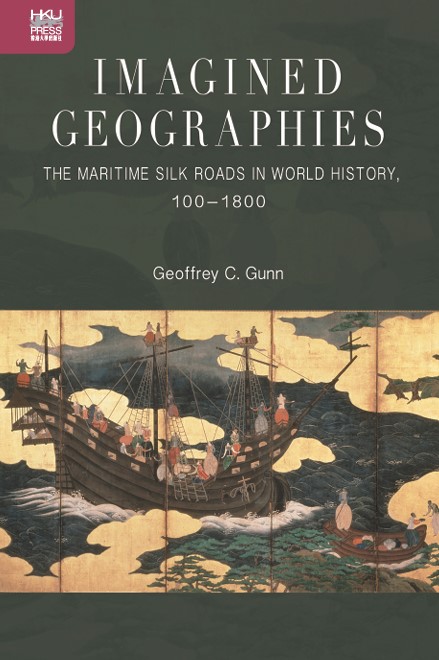|
|
|
|---|

| ชื่อผู้แต่ง | Geoffrey C. Gunn |
| ประเภท | เอกสารวิชาการ |
| ประเด็นสำคัญ | การเมือง การข้ามคาบสมุทร การค้าทางไกล เศรษฐกิจการค้า |
| จำนวนหน้า | 313 หน้า |
| ภาษา | อังกฤษ |
| ปี ค.ศ. | 2021 |
| สำนักพิมพ์ | Hong Kong University Press |
| สถานที่พิมพ์ | Hong Kong |
Acknowledgments
Introduction
I. Moving beyond National History
II. Imagined Geographies/Geographical Imaginaries
III. Unpacking Area Studies and the Importance of Scale
IV. Islamization
V. Sinicization
VI. The Chapters
Part I: Writings
Chapter 1: Writing a Decentered World Regional History
I. Historiographical Trends in World Regional History Analysis
II. Between China and India: An Essential Southeast Asia?
III. European Exceptionalism?
IV. East Asia Regionalism and the Framing of World Region
V. European Imaginaries on an East-Southeast Asia Region
Conclusion
Part II: Imaginaries
Chapter 2: An Indian Imaginary
I. Indian Civilizational Influences in the India-China Interzone
II. Deeper Patterns from Prehistory
III. The Indian Trade and Civilizational Transfer
IV. The Archaeological Record from the India-China Interzone
Conclusion
Chapter 3: Arab Geographic Imaginaries
I. Arab Trade and Islamic Conversion
II. Arab/Muslim Geographies of Asia
III. Arab Navigational Primacy
IV. Ninth-Century Arab Merchant Accounts as Translated by Renaudot
Conclusion
Chapter 4: Geographic Imaginaries from the Chinese Tradition
I. The China-Centered Tribute Trade System Explained
II. Chinese Monks to India and the Making of an India Imaginary
III. Song China Appraised
IV. A Song Dynasty World Imaginary
V. A Chinese South Seas Priority under the Mongol-Yuan Dynasty?
VI. The Early Ming-Era Voyages of the Muslim Admiral Zheng He
VII. Chinese Maritime Prowess and Cartographic Empowerment
Conclusion
Chapter 5: Japanese Geographic Imaginaries: The Tokugawa Invention of a Japan-Centered International Order
I. Japan’s Tribute Trade with China and the Korea Connection
II. Accommodating the Nanbanjin
III. Accommodating Other Asians
IV. Japanese Geographic Imaginaries
Conclusion
Chapter 6: Geographic Imaginaries of an Austral Land
I. European Discovery Narratives
II. Manuel Godinho de Erédia’s Australia
III. Portuguese-Dutch Navigations
IV. The Macassan Connection
V. A Chinese Imaginary of Australia
Conclusion
Part III: Evidence
Chapter 7: Connecting Up the Dots on Global Port Cities
I. Port Cities of the Middle East–Indian Ocean Circuit: The Greco-Roman World of Seafaring
II. Islamic World Ports
III. Southeast Asian Circuits
IV. The South China and East China Sea Circuits
Conclusion
Chapter 8: The Evidence from Marine Archaeology
I. Ceramic Trade as a Proxy for Early Trade Activity and the Rise
and Fall of Port Cities
II. Key Marine Archaeology Sites across the Indian Ocean
III. Early Modern Trade Polities in East-Southeast Asia: The Evidence from European Shipwrecks
Conclusion
Part IV: Examples/Alternative Realms
Chapter 9: The Ryukyu Trade Networks Revisited
I. Precious Documents: The Rekidai Hoan
II. Ming China and the Ryukyu Tribute Trade
III. The Ryukyu-Korea Trade
IV. The Ryukyu–Southeast Asian Trade
V. Dual Subordination: Between the Qing and the Tokugawa Bakufu
Conclusion
Chapter 10: Configuring Macau on the World Map
I. Portuguese Macau Exceptionalism
II. Early Jesuit Mapping of Ming China
III. The Jesuit Astronomical Project in Macau
IV. Macau Mapped According to European Conventions/Macau and Pacific Ocean Exploration
V. Macau in the Chinese Xylographic/Cartographic Tradition
Conclusion
Afterword
I. Alternative Realms
II. The Rise and Fall of the Thirteenth-Century World System
III. Autonomist or Borderless Histories?
References
Index